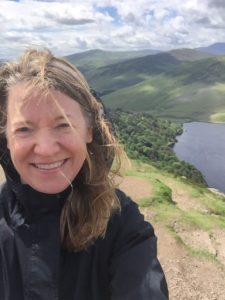
Sarah in Ireland
Setting is always my favorite thing about starting a new book, settling into the world where the story is going to take place, learning its parameters, its roads and shops and secret places, and figuring out my characters’ relationships to the place where the action happens.
Sometimes, I find my stories naturally unfold in actual places, exact facsimiles of cities or towns I know well. Other times, I need to completely invent the fictional spots in which my stories will take place. Most of the time, it’s a combination of the two.
REAL PLACES, REIMAGINED
My first mystery novel was set in an invented town called Byzantium, Vermont. The town was based on an actual place, a small New Hampshire town that had been the site of a famous American arts colony in the early 20th Century. My great grandmother had been a member of the arts colony and I had grown up hearing stories about it. I lived close by and could have easily recreated the town on the page. But I didn’t want to. I wanted to create a fictional arts colony, so I’d have some freedom to move things around, to put houses and bodies of water where I needed them for the purposes of my story. I also wanted to feel free to create characters who weren’t based on real people. Creating a new town, whole-cloth, with an invented name, helped me to do that and it helped me to not worry about whether real people would “see themselves” in the book.
REAL PLACES, ALTERNATE REALITIES
I’ve also written middle grade adventure novels, set in a speculative/alternate reality United States. The whole point of those books is that in a near future world, it’s discovered that the maps of the world are all wrong and there are, in fact, “new” places. In these stories, I have the freedom of inventing every detail of my settings. But I still want them to feel like places that could exist. I’ve chosen settings – the Caribbean, the American Southwest – where I’ve been, even when I’m including fantastical elements.
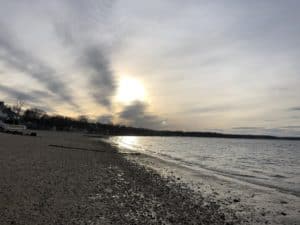
Long Island
REAL PLACES, REAL ISLANDS
The mystery novels I’m writing now are set on Long Island, where I grew up, and in Ireland, where I have lived. Because both settings are so important to me, I feel a huge responsibility to get the details right. I take frequent research trips back to both places, or did before 2020. Even so, I often invent fictional pubs or villages or beaches, to give myself some creative freedom.
I like to think of the “invented but real” places where most of my novels take place as wormhole locations. I imagine that I’m walking along in an actual place and walk through a doorway into a space that shares the geographic characteristics of the actual place. The name on the pub sign may be invented, but the people who work there need to be people who would work in a pub in that location and the sights and smells and sounds need to ring true.
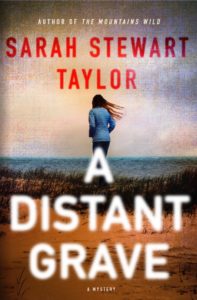
Coming in June 2021
SETTING HOW-TO TIPS & TRICKS
Here are some of the things I’ve learned about describing and creating settings:
Research is key.
Whether the place is fictional or real, it has to feel And the only way to make a place feel real is to use specific, sensory detail. You need to know what the waves sound like, how the air smells, which birds sing at daybreak. It’s really hard to get those details secondhand.
I generally try not to write about places I haven’t been. When I’m writing about an actual place I’ve been, but need details I didn’t gather on my research trip, I sometimes use Google Maps Streetview to “travel” down a city street or country road.
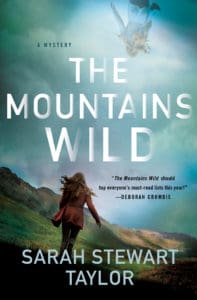
The first in the Maggie D’arcy series
Map it.
Sometimes, if your story is stuck, it’s because you haven’t fully realized your fictional setting. Draw a map of it and then try moving things around. I recently found myself stuck while working on my work-in-progress, which is set on the West Cork coast of Ireland. Though the book is set in an actual place, I’ve created a fictional peninsula for the story. I drew a detailed map of the peninsula and started moving houses around to put characters in different proximity to each other and to the hotel where some of them work. By playing with the map, I saw new possibilities for my characters and their relationships to each other.
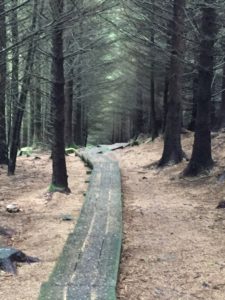
In the Wicklow Forest
Setting is backstory.
Think about your characters’ relationship to the setting. Chances are, it has impacted their choice of profession, their health, their ability to form and maintain relationships, and so many more aspects of their lives. Delving into the backstory of how your characters or their ancestors ended up in the location of your story can open up new avenues for character development.
Go local.
Go local by finding and reading local news coverage of your setting. There are wonderful details about the local environment, economy, demographics, and cultural life to be found on online new sites or in local newsletters.
My favorite books (especially right now) are the ones that make me feel as though I’ve traveled somewhere other than my cozy reading chair. Take the time to really research and explore the possibilities of your settings – real or imagined – and you’ll take your readers on a journey they won’t soon forget.
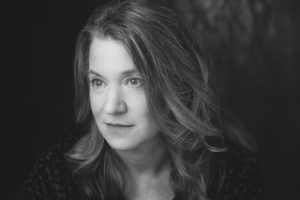
SARAH STEWART TAYLOR is the author of the Sweeney St. George series and the Maggie D’arcy mysteries The Mountains Wild (2020) and A Distant Grave (2021). As S.S. Taylor, she writes the Expeditioners series for younger readers. She grew up on Long Island and was educated at Middlebury College and Trinity College, Dublin. A former journalist and teacher, she writes and lives with her family on a farm in Vermont where they raise sheep and grow blueberries. Sarah spends as much time in Ireland as she can and loves to explore new corners of the island. You can visit her online at www.SarahStewartTaylor.com.





